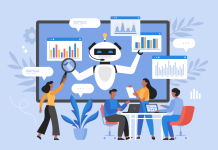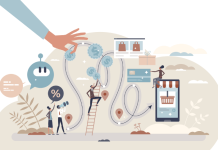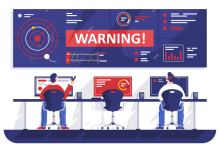
Way too many centers have way too many manual process steps, negatively impacting the customer experience and the cost of doing business. Long handle times are the most obvious impact, but it also hinders agent training time, first-contact resolution (FCR), handoffs and consultations. CSRs consistently bemoan the mundane tasks they have to execute and the difficulties created by clunky systems. And don’t get me started on risk management and compliance!
As you think about automation opportunities in your center, reflect on both self-service and assisted service. Start with the customer interfacing with your IVR, mobile app or website. Where do these tools fall short in letting a customer succeed (which is your goal and theirs)? What makes a customer so frustrated they bail on these low-cost channels and move to a higher-cost channel?
Now think about contacts routed to agents—directly or because of self-service failure. These days, by nature, we are talking about a variety of channels, so assess your opportunities across them all. What leads to a customer being put on hold, or an agent doing dull tasks, like typing the same old greeting or notes, cut and paste, or yet another account lookup? You can also think about other elements beyond the center, like handoffs or workflows that involve back-office functions. What is an agent doing to trigger or route a task that perhaps a system could do on their behalf?
Now consider support functions, like quality monitoring, forecasting and scheduling, or analysis of the mountains of data your contact center technology creates. Many support functions can really be a burden and don’t get done or done well, especially during peak seasons or in changing environments. Could automation help get those important tasks done no matter what’s going on in your company or center?
As you’re scouring your center for opportunities, keep in mind that process automation can be multifaceted. It could be a combination of rules working with Artificial Intelligence. It could be something like authentication that improves both self-service and assisted service. It could take on a task by itself or guide an agent, easing or improving their execution. And automation can start in one channel, like a mobile app, and move to another, like texting or calling an agent.
Automation can drive efficiency, which just about every center we work with is trying to achieve. Shorten handle times, increase FCR, reduce workload (volumes of contacts, tasks), eliminate repeat work… the list goes on. Some folks in your organization may be more excited about effectiveness, manifest in consistent, compliant, timely execution of tasks. And anyone with profit-and-loss responsibilities will appreciate the revenue that could result, for example, when a system automatically indicates the best thing to sell.
Automation creates trackable processes as it captures data, reports on it, and facilitates insights that can lead to optimization. With data, you can hold people accountable to outcomes and performance targets. It creates a closed loop on customer-facing and internal activities.
So, here’s your mission, should you choose to accept it:
- Brainstorm opportunity targets: Use the figure above as a catalyst. You know where there are painful or neglected processes in your center. Your CSRs do, too, so ask them!
- Develop use cases for those opportunity targets: Outline the scenario(s) and identify the repetitive, relatively easy steps (“if… then…” types of things), or the ones that don’t always go as planned due to human error or forgetfulness. Show how the use case could change if automation was introduced.
- Quantify the impact: Things that reduce volume or handle time are big-hitters, as they translate directly to workload and therefore the number of agents (the biggest cost contributor in the contact center!). Changes that drive bumps in sales revenue are easy to justify—the gift that keeps giving! And even things that improve the customer experience are worth noting, for the soft benefits that can sometimes be turned into tangible benefits (e.g., loyalty drives revenue, better agent experience reduces turnover).




